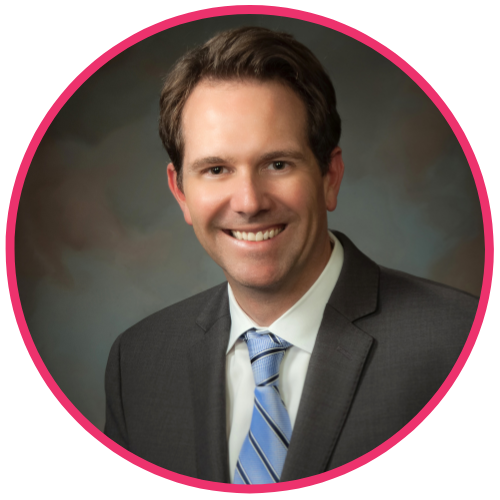
Jay P. Anstine is a compliance professional and consultant in Colorado. He is writing a series of articles on compliance culture for the YouCompli blog. This post looks at engaging the compliance committee.
Within the business of healthcare, we talk a lot about a culture of compliance. Typically, we focus on a commitment to compliance throughout all levels of the organization, but have you stopped to think about how an engaged compliance committee helps shape that culture?
Having a compliance committee is one of the seven elements of an effective compliance program. It generally includes operational leaders within the organization who have oversight for high-risk areas. This is likely to be a chief executive officer (CEO), a chief financial officer (CFO), and a chief nursing officer (CNO). The committee is also likely to include billing and coding leaders, administrative or clinical department managers, HR leadership, privacy leaders, and a physician representative or Board member.
The healthcare compliance committee assists the compliance officer with the maintenance of the compliance program and its related activities. For example, I worked with my compliance committee after the Office of Inspector General (OIG) fraud alert surrounding medical director physician compensation arrangements was issued. To help conduct a review of all medical directorships within the organization, several members helped me gather the contracts and assist in a coordinated review of physician compensation. It would have been incredibly difficult for me to do this on my own.
These leaders are invaluable to the compliance officer when they provide their perspective on operational impact related to the compliance program’s activities (e.g., regulatory change management, auditing & monitoring, education & training). They can also play a critical role in supporting your organization’s culture of compliance.
Recalling back to my first article in May, I defined a compliance culture as a commitment throughout all levels of an organization to do the right thing and do things right. To achieve that, your healthcare committee members need to be engaged.
Here are four approaches that have worked for me:
1: Understand and relate to the compliance committee’s point of view
Your point-of-view (POV), as a compliance leader, is probably influenced by wanting to have an effective compliance program. Likely, you also want compliance to help the organization best serve patients. Most healthcare leaders are motivated to find newer, faster, or better ways of delivering services to patients. They also want to determine what is in the best interest of the patient. Financial growth is usually in the mix as well.
Consider a CNO. As a member of the senior leadership team who reports to the CEO, the CNO wants to support the CEO’s strategic plan for the organization. One example is advancing new clinical service lines. As the highest ranking clinical leader, he or she is also driven by what is in the best interest of the patient and the clinical staff.
Now, try to understand how the leaders’ POV affects their views on the compliance program. Try positioning the compliance work you’re discussing to align with a leader’s goal. For example, if a CFO’s POV is shaped by reducing the organization’s financial risk, does the audit you’re discussing with the committee help achieve that goal?

All leaders want to see how the changes will affect their teams. They’ll want to know your regulatory change management process is manageable and efficient. Try to anticipate questions. For example, let’s assume you have identified a new regulatory change impacting clinical operations. You can expect a CNO to ask questions like this:
- How is patient care impacted?
- Which clinical departments are impacted?
- Are these departments aware of the change?
- Which department(s) will be responsible for owning the change in procedures?
- How will the change be rolled out to the staff?
- What will education and training look like?
Anticipate the questions you’re going to be asked and be prepared with answers before committee discussion begins. You’ll alleviate concerns and build confidence that the regulatory change management process will be efficient.
2: Lay a foundation to help members understand compliance concepts
Keep in mind that the committee will not be as familiar with compliance concepts as you are. Take a step back and connect the dots for them. For example, if you are having a discussion with your committee about a potential breach of patient protected health information (PHI), explain the process first. Going through the four-factor analysis under HIPAA’s Breach Notification Rule (BNR) enables them to understand what that process looks like.
When you lay the foundation for your committee, you are making them more informed. Over time, you will see more engagement. With the BNR, for example, you have improved their understanding of the “why” behind your compliance program. This helps them communicate more effectively with their staff and showing up as a leader who cares about PHI protection. This leads to them more proactively raising questions and staff reporting in potential concerns.
3: Communicate through relatable content
People learn through stories. I like to use them in two ways:
- Similarly Situated Stories (Triple S) help you make a point. The Triple S are news stories that factually hit on your organization’s size, scope of services, or the issue you are facing. For example, if I’m discussing the importance of removing an employee’s IT access following a termination of employment, I would mention the Office for Civil Rights (OCR) settlement with Pagosa Springs Medical Center. Here, this hospital failed to terminate an employee’s access, which allowed the employee to access patient records for three months after termination.
- Communicating Business Impact stories (CBI) embed organizational consequence into a compliance message. Let’s say you are discussing the aftermath of a large scale data breach – one involving more than 500 patients in the same jurisdiction. You can use the CBI method to paint a hypothetical picture of the organization’s response:
- Meetings with leadership that divert resources from other business needs.
- Time and money recruiting a new employee if it’s determined the employee needs to be terminated.
- Reputational impact if the media is notified.
- Fines and penalties assigned which can impact the organization’s bottom line.
Using relatable content like Triple S or CBI puts context and interpretation around what the regulations mean. This helps improve your committee members’ understanding of the regulations and operations of the compliance program. You create urgency and improve engagement.
4: Encourage the committee to ask questions
Encourage committee members to ask questions. Asking questions is a clear sign of an engaged individual. They are listening and genuinely interested in the topic – enough to engage and ask questions to understand more deeply.
Then, be sure to thank them when they do ask questions. By acknowledging you value their questions, you encourage the committee to keep asking questions and internalizing the information for themselves. This will help them more effectively lead their teams through change and ensure the policy or approach you take reflects their day-to-day reality.
The most engaged compliance committee members I’ve worked with share some characteristics. They were the ones who expressed a genuine interest in understanding the compliance program by listening actively to what’s being said and not multi-tasking during meetings. They asked the most questions, and proactively offered suggestions and concerns.
Their level of engagement also impacted the organization’s culture of compliance. They were the first ones to complete mandatory compliance training, and they made sure their staff did the same. When regulatory change led to operational changes, they supported the program by actively participating in discussions and decisions related to how the organization would comply. Lastly, they proactively reported issues in and encouraged their staff to do the same.
Some committee members are inherently engaged, just because of their personality. In other cases, you are going to have to put in effort to get them engaged.
The effort is worth it, though. You’ll have better relationships and develop policies and procedures that reflect the day-to-day reality of front-line staff. Your staff will feel that they work in a place where people at all levels are committed to doing the right thing and doing things right. This, in my view, is the essence of a culture of compliance.
Jay P. Anstine, JD
Jay is a compliance professional and consultant in Colorado. Jay is a healthcare lawyer with significant industry knowledge of the U.S. healthcare market. Over the past 20 years, he has worked for large for-profit and non-profit health systems and small physician-owned entities. In tackling the countless regulatory and operational issues for these diverse organization types, he has developed a deep understanding of the business of healthcare and the regulations governing the industry. In 2018, Jay became an adjunct faculty member with the University of Southern California, Gould School of Law, designing and teaching healthcare compliance courses.
Jay obtained his law degree from the University of South Dakota, where he focused on healthcare law. From 2012-2016, he served on the Board of a non-profit organization serving the medically underserved in Colorado (ClinicNET). He is also a member of the Health Care Compliance Association (HCCA), serving on the planning committee for the Mountain Regional Conference since 2008. He is writing a series of articles on compliance culture for the YouCompli blog. This post looks at building trust among your colleagues. This post looks at measuring your organization’s culture of compliance.

Take Free RL3M Assessment (Regulatory Lifecycle Management Maturity Model)
Download our Latest Whitepaper


- One Compliance Pro’s Regulatory Change Management Process
- Five ways to show how healthcare Compliance delivers value
- 12 key metrics for compliance officers looking to…
- Transforming Compliance to a Department of Yes
- Exclusion Screening Failure Causes Compliance Nightmare
- Three Strategies to Align Compliance with Revenue Cycle
- Revenue Cycle Management Compliance: Ensuring…
- Aggressive vs Assertive Communication: What New…
- Polish Your Quality Education Program
- How the Three Lines Model Strengthens Healthcare Compliance

